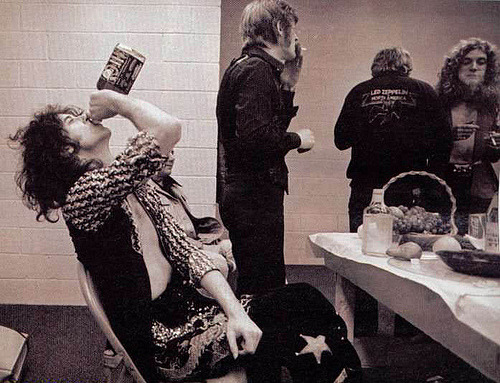
As someone who grew up in a household where we worshipped Led Zeppelin instead of Jesus, I sympathize with those of you who think electronic music is a cop-out. I’ve played guitar since I was 10 and I understand harboring some frustration at the idea that someone can make music that sounds better than yours without even picking up an instrument. Though some electronic producers and DJs rely heavily on samples and resort to generic club beats to numb the minds of the masses, many are out there creating art that takes listeners to another dimension. A ton of electronic artists and composers have extensive musical backgrounds, play instruments, and use original content. One person comes immediately to mind when I think of musically gifted electronic producers: Derek Vincent Smith.
Otherwise known as Pretty Lights, Smith grew up playing bass in a funk/hip-hop band and taught himself a plethora of other instruments along the way. He understands the value of physically playing an instrument and became well-versed in music theory and the way melodies and sounds interact with one another. He produced all of the music for the bands he was in growing up and eventually started making hip-hop beats on his own. He teamed up with several other musicians and producers over the years, including Paul Basic and Michal Menert, to create what is now known as Pretty Lights; a combination of Smith’s instrumental talent, ear for complex musical arrangements, and production prowess. Pretty Lights began opening for jam bands such as STS9 and Widespread Panic whose musical prestige and cult-followings put him on the radar of music nerds everywhere.
Pretty Lights started touring around 2009 and worked his way up the ranks to play at festivals such as Electric Daisy Carnival, Lollapalooza, and Bonnaroo. People loved that they could just jam to his music– it wasn’t pretentious and inaccessible as some people felt jam bands were, and it wasn’t monotonous and repetitive as dance music can be. It sits right in the sweet spot between the two genres and combines melodic elements of jam bands while retaining hard bass lines and punchy beats characteristic of electronic music. He sifts through vintage funk and soul records to come up with the samples he uses in his songs, which gives his music an old-school feel despite its crisp electronic production. In songs like “So Much In The Dark,” Smith also mixes in layers of horns, keyboards, and guitars to enhance his music’s melodic complexity and give listeners something to sing along to (as interpreted by me, a person who frequently sings along to guitar solos).
Unlike most electronic music which tends to be mostly instrumental, all of Pretty Lights’ songs contain some vocal element whether that be soul music, hip hop, or an audio clip from a movie. The vocal hook will weave its way through the song, sometimes appearing in choppy segments during breakdowns or in its entirety before a drop. He also likes to incorporate orchestral pieces as a juxtaposition between classical and modern musical styles. Pretty Lights performances always feature a live drummer and, recently, an entire live band. His albums “A Color Map of The Sun” and its offshoot “Live Studio Sessions from A Color Map of The Sun” feature only music that he wrote, recorded, and pressed onto vinyl himself. He plays bass, guitar, keys, and synth on the album while still retaining his signature digitally thumping sound.
Anyone from dancehall junkies to pretentious jazz-heads can vibe to Pretty Lights’ undeniably bumping songs and foster respect for his musical integrity and dedication to his craft. Check out Pretty Lights’ prolific discography for an endless supply of quality jams.


